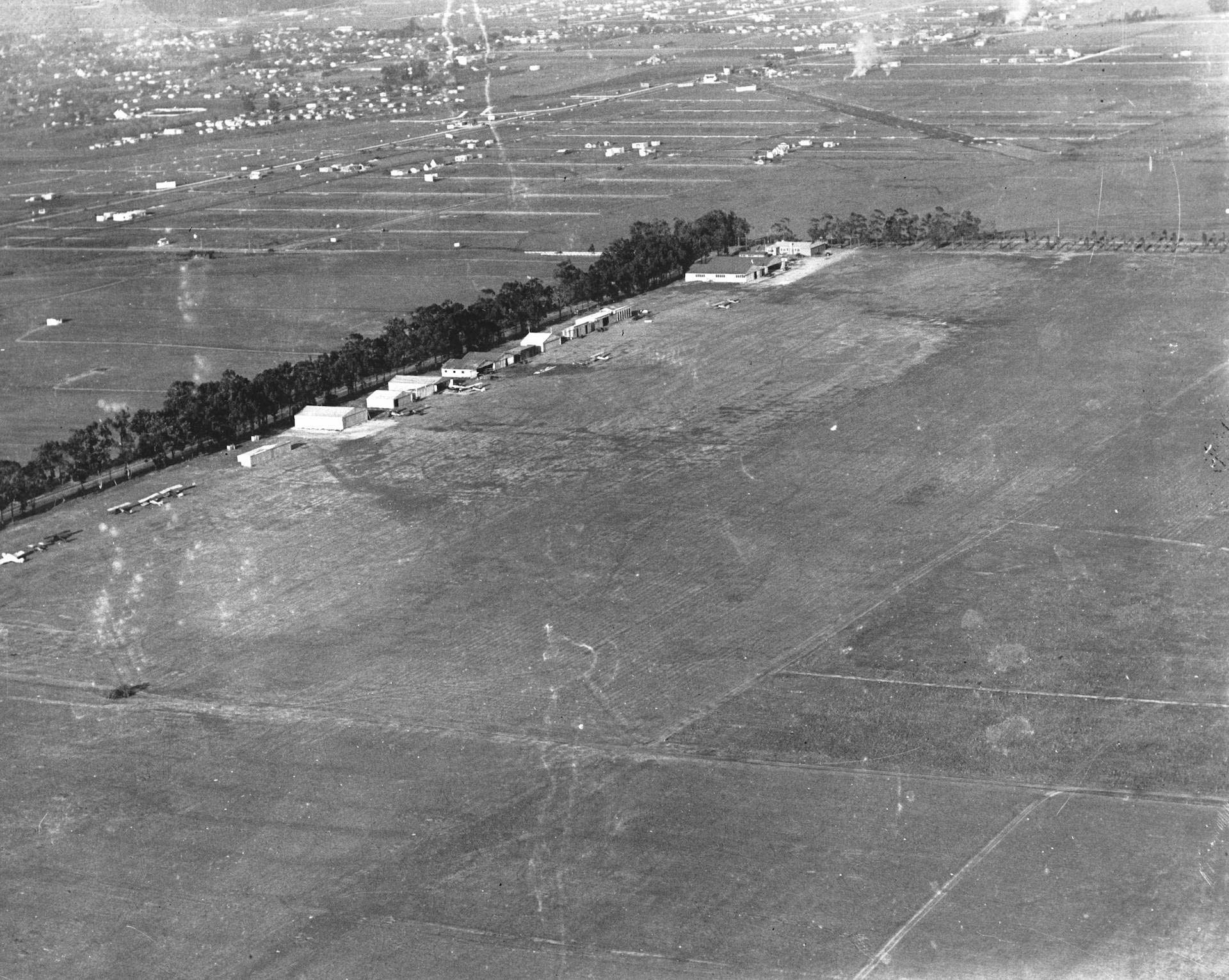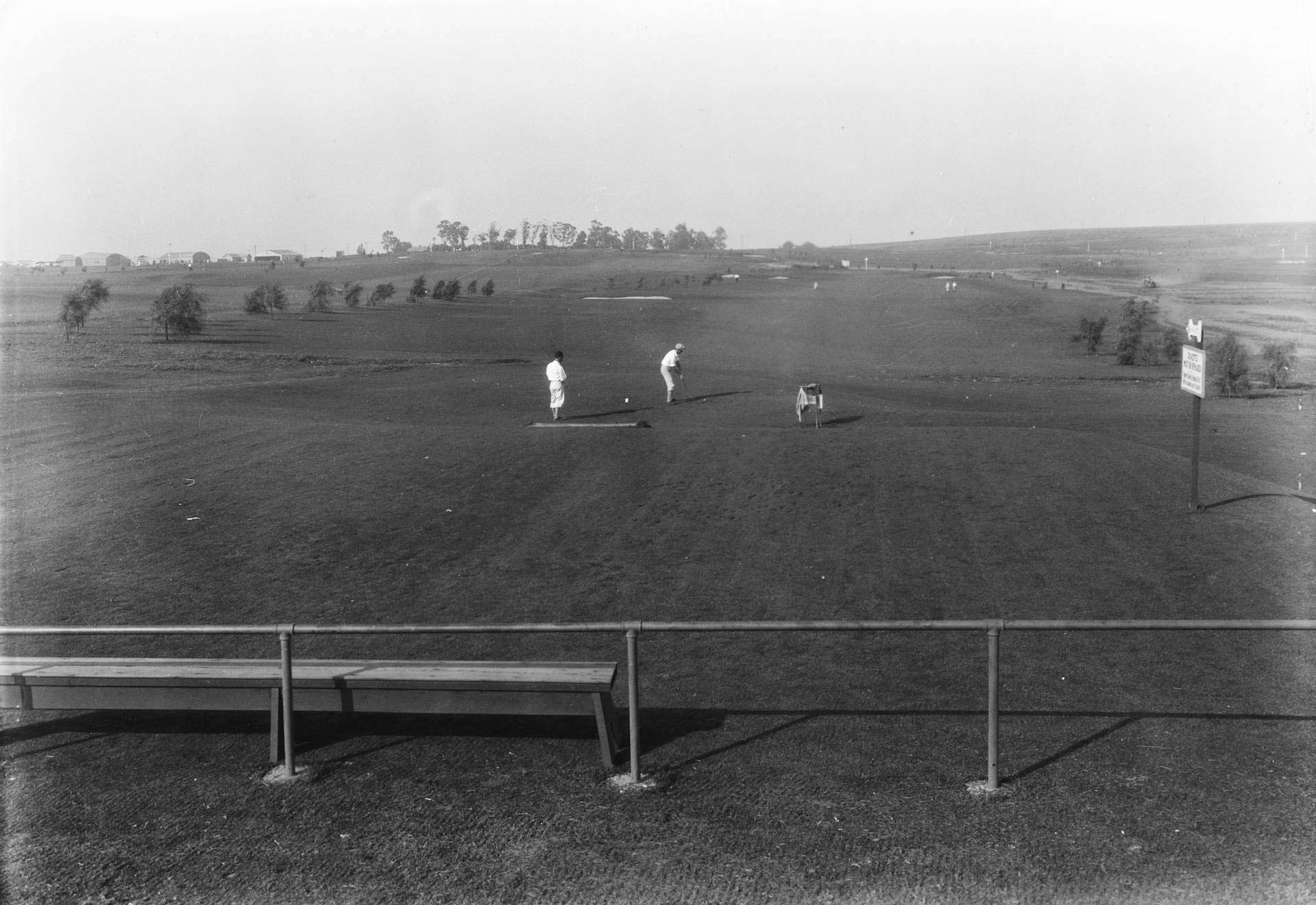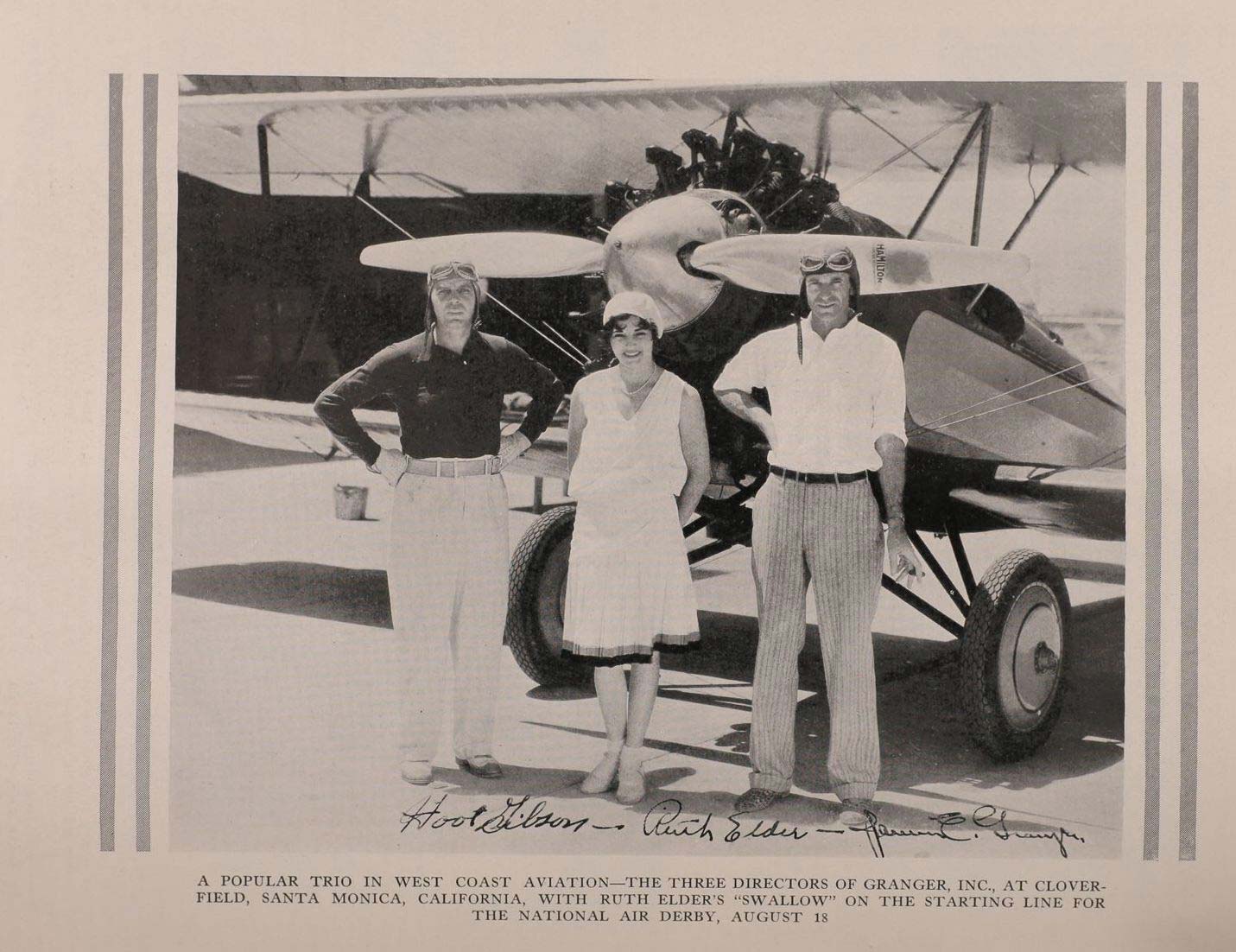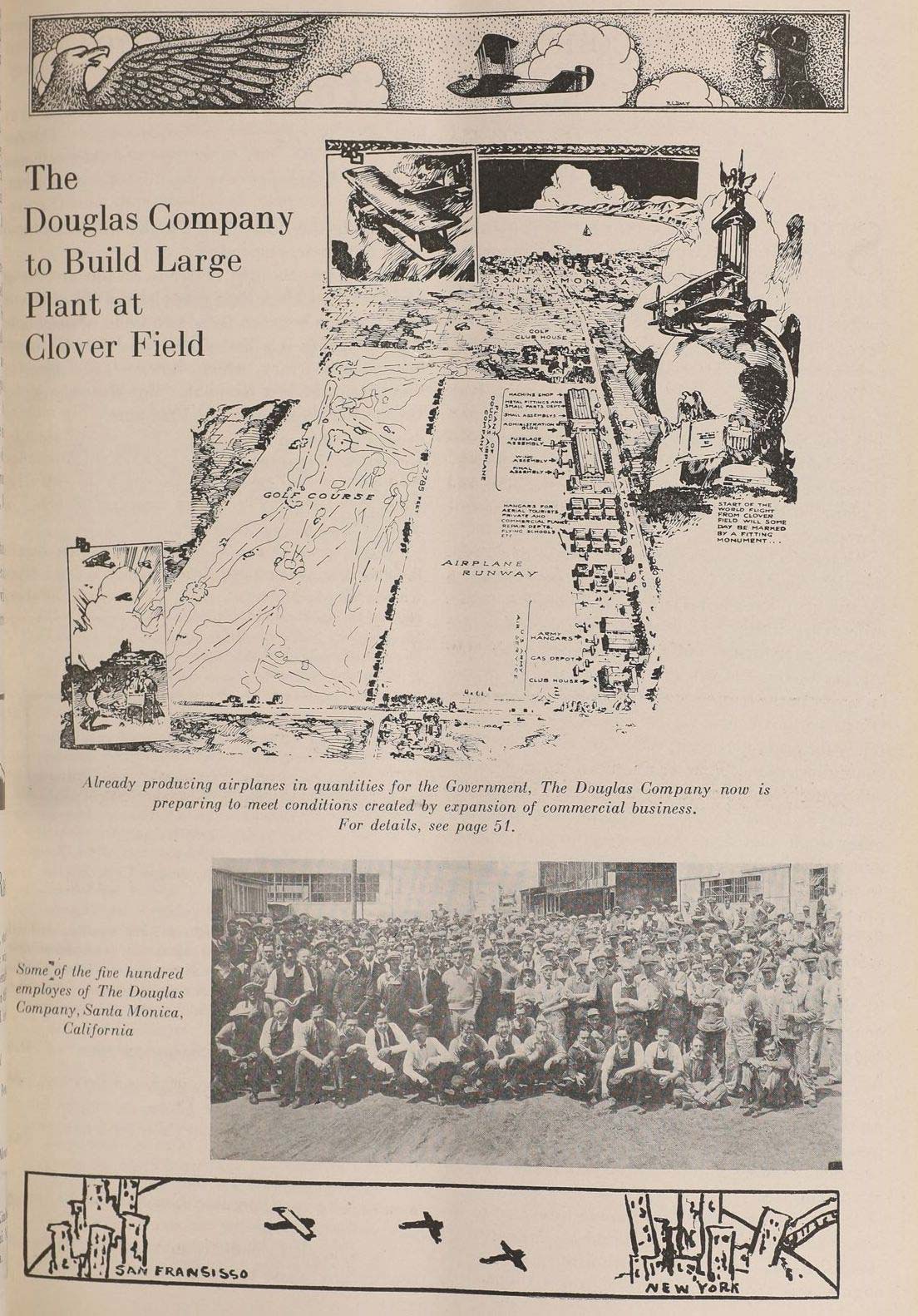Before “Cloverfield” was a monster, it was an airfield. As early as 1917, aviators were landing atop a mesa just southeast of Santa Monica, touching their wheels down on a narrow, grassy strip surrounded by stalks of barley.

Soon the primitive runway became a military airfield, and in 1922 the U.S. Army named it Clover Field in honor of Greayer Clover, a local fighter pilot killed in France during the First World War. Since then the site has served many purposes. First it was the western headquarters of the Army’s reserve air corps, and later Douglas Aircraft produced its famous line of DC planes there. The City of Santa Monica purchased the parcel in 1926 – a transaction championed by businessman Frank Bundy, whose namesake avenue appropriately leads there – and turned it into a municipal airport.
Today, it’s the source of intense local concerns about noise and safety. (Actor Harrison Ford notably crashed his vintage plane into a golf course shortly after takeoff in 2015.) It’s almost certainly doomed to close in 2028, under the terms of a consent decree between the city and the Federal Aviation Administration.
When it does, the airport will be remembered as the location of many milestones in aviation history:
On March 17, 1924, a fleet of four Douglas World Cruisers, manned by U.S. Army aviators, took off from Clover Field. On Sept. 23, two of the pioneering planes returned, completing the first aerial circumnavigation of the world.
Five years later, the airfield hosted the start of the Women’s Air Derby. Nineteen of the world’s best female aviators – including its most famous, Toluca Lake resident Amelia Earhart – took off from Santa Monica on Aug. 18, 1929, racing their way to Cleveland, Ohio. The winner, Louise Thaden, completed the journey in 20 hours, 19 minutes.
And on July 1, 1933, the maiden flight of Douglas’s prototype DC-1 airliner, with its streamline design and comfortable, noise-insulated cabin, inaugurated the age of modern passenger air travel.
It hasn’t been known officially as Clover Field since 1927, when the City of Santa Monica, furious that radio announcers were referring to it as “Clover Field, Los Angeles,” insisted the airport’s name reflect its new ownership. That was long before producer J.J. Abrams reportedly borrowed the title for his 2008 sci-fi monster film from a freeway sign for Cloverfield Blvd – a street that once led to the barley field where biplanes landed.




- Credit: Nathan Masters, KCET
- Photo Credits: California Historical Society Collection, USC Libraries

